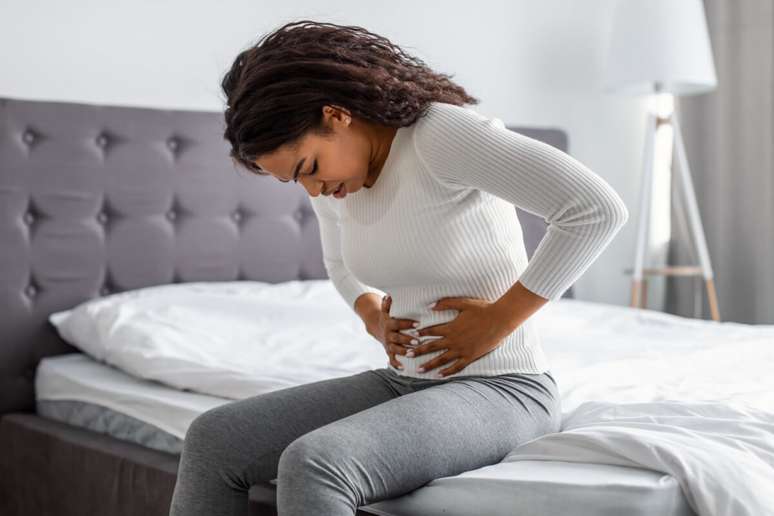The specialist teaches how to identify and differentiate each of the pains in the belly region
Abdominal pain is a common symptom and can affect people of all ages. This feeling is usually quite annoying and can cause concern depending on its intensity or persistence. They can be caused by a variety of conditions, from simple problems to more serious situations that need immediate attention.
html[data-range=”xlarge”] figure image img.img-2c23110ad26a3df5ae0ed92e7e1111d75gyj9gzu { width: 774px; height: 516px; }HTML[data-range=”large”] figure image img.img-2c23110ad26a3df5ae0ed92e7e1111d75gyj9gzu { width: 548px; height: 365px; }HTML[data-range=”small”] figure image img.img-2c23110ad26a3df5ae0ed92e7e1111d75gyj9gzu, html[data-range=”medium”] figure image img.img-2c23110ad26a3df5ae0ed92e7e1111d75gyj9gzu { width: 564px; height: 376px; }
In this sense, it is important to pay attention to the signs of the body, as well as seek help from an expert. With that in mind, digestive tract surgeon Dr. Rodrigo Barbosa explains what types of abdominal pain are and how to identify them.
1. Upper pain
Popularly known as pain in the stomach pit, as the organ is located in the region above the belly. The causes can be related to digestion, poor diet, the consumption of industrialized, fatty and fried foods, as well as the way of feeding with fluid intake during meals or eating and going to bed immediately after.
Among the diseases that can be related to this pain are reflux, gastritis, duodenitis, gallstones or changes in the pancreas if accompanied by vomiting. There is also epigastric pain, which is cardiac in origin and requires attention. This can also radiate to the back and chest area. Therefore, those who have such a problem should do endoscopy and ultrasound of the abdomen to identify exactly the origin of the pain and treat it accordingly.
2. Pain in the lower abdomen
In women, they can come from the reproductive cycle and gynecological pain. If there is a change in the color of the urine, a foul smell and pus oozing through the pee, it may be linked to a urinary infection. Clinical examination and ultrasound are required.
If they are gastrointestinal cramps accompanied by tightness to the stomach or diarrhea, a colonoscopy may also be needed for proper evaluation. If there is still a history of cancer in the family, this examination should be done on a regular basis. If the pain in women is cyclical and accompanied by menstrual cycles, even if associated with diarrhea, it may be normal for the hormonal cycle, but should be investigated.
3. Pain in the right side of the belly
In this region there are different organs such as the liver, gallbladder, large intestine, appendix, kidney, among others. If it is a pain originating from the gallbladder, it usually starts in the upper right side and occurs after eating food with a lot of fat, causing diarrhea.

4. Pain in the central region of the abdomen
The central region is very nonspecific: Basically, there’s the small intestine and the navel — and, there, there’s a high incidence of umbilical hernia. That Ache it can be chronic pain and cause tightness or stabbing, which can trap the intestines, in which case surgery is needed.
Discomfort in this region can also be pancreatitis or intestinal infection; you need to do a physical exam to identify yourself. If it causes bloating, belching and migratory pain all over the belly or blood in the stool, it could also be a syndrome.
5. Pain in the left side of the belly
On the left side are the spleen, intestines, kidneys and other organs. If the pain comes from this region, it could be a problem with the spleen, but these are rarer cases. It could be pain in the kidneys, which appears in points that spread to the spine and implies severe pain with which the patient feels the need to stay in a bent position. If there is reddish colored pee, you need to get quick help in the emergency room.
If this pain is coming from the intestine region, it is because there may be some inflammation that needs to be identified. It can appear in persistent diarrhea or constipation. Colonoscopy is required. Now, if the pain comes from above and travels down, causing loss of appetite, fever, and general malaise, it could be an inflamed appendix.
In women, the ovaries can cause constant pain that gets worse with menstrual periods, which could be endometriosis. Transvaginal and abdominal ultrasounds are needed to understand the exact disease.
By Mayra Barreto Cinel
Source: Terra
Ben Stock is a lifestyle journalist and author at Gossipify. He writes about topics such as health, wellness, travel, food and home decor. He provides practical advice and inspiration to improve well-being, keeps readers up to date with latest lifestyle news and trends, known for his engaging writing style, in-depth analysis and unique perspectives.









